UPSC Exam > UPSC Notes > Famous Books for UPSC Exam (Summary & Tests) > Geography of South America- 2
Geography of South America- 2 | Famous Books for UPSC Exam (Summary & Tests) PDF Download
DESERTS OF SOUTH AMERICA
- Patagonian Desert – the largest desert by area located in Argentina
- La Guajira Desert – a desert in northern Colombia and some of northwestern Venezuela
- Atacama – a desert in Chile, the driest place on Earth.
- Sechura Desert – a desert located along a portion of the northwestern coast of South America
- Monte Desert – in Argentina, a smaller desert above the Patagonian desert.

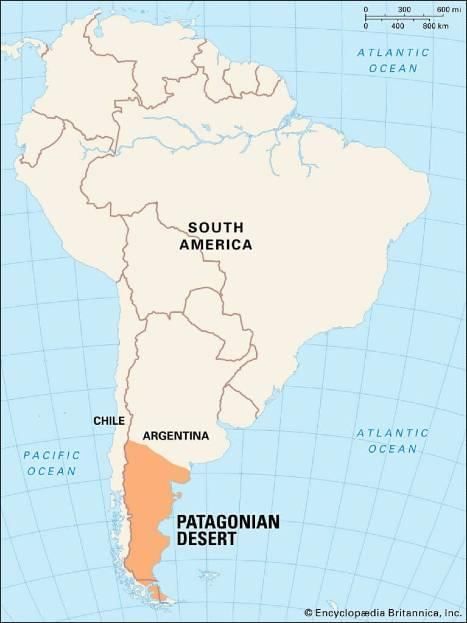
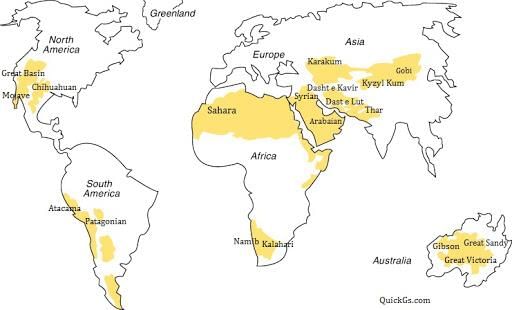
DRINAGE SYSTEM OF SOUTH AMERICA
- The Amazon Basin
- The Rio de Plata Basin
- The Orinoco Basin
- The Sao Francisco Basin
The Amazon Basin
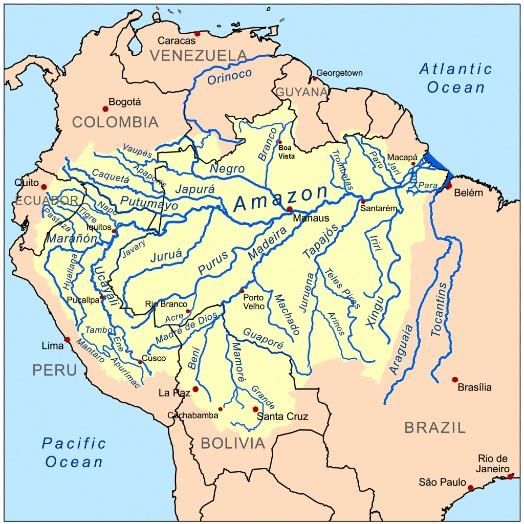
- It is the basin of River Amazon.
- Its length is second to that of the Nile river of Africa.
- It has the largest flow of water in the world.
- The river drains nearly 40 per cent of the area of South America.
- The major tributaries of the Amazon river are the Caqueta, the Jurua, the Madeira, the Negro, etc.
- Equatorial rainforest
- Navigable till Manaus
- Petroleum at mouth
- Natural Rubber
- Amazon rainforest – deforestation due to cattle ranching and soya beans field.
The Rio De Plata Basin
- This basin is second in size to that of the Amazon.
- The main rivers which form the Basin of Rio de Plata are the river Paraguay, the Parana, and the river Uruguay.
- River Parana (4,879 km) rises from Minas Gerais from a water divide Carino.
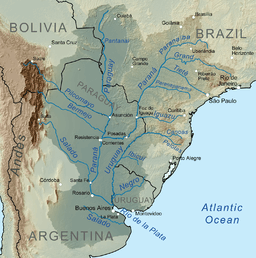
The Orinoco Basin
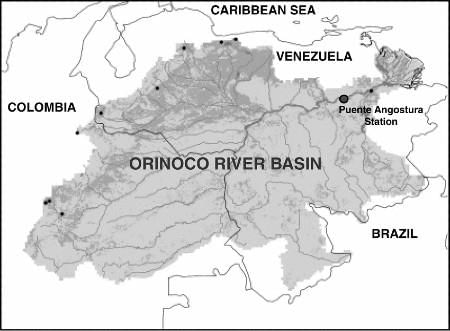
- This is considered to be the third-largest drainage system of South America.
- It rises in the Southern end of Sierra Parima near Mount Delgado Chalboud at a height of 1000 meters.
- It traverses 2,740 km to meet the Atlantic ocean.
- The word the Orinoco means ‘a place to paddle’, i.e. a river where navigation is possible.
- In the North, the Orinoco river passes through a zone called ‘Region of Rapids’ where there are enormous granite boulders.
- The world’s highest waterfall Angel (979 m) is situated on river Churun which is a tributary of river Caroni which is further a tributary of river Orinoco.
- The Orinoco flows through the llanos (savanna grasslands) of Venezuela into the (North Atlantic Ocean).
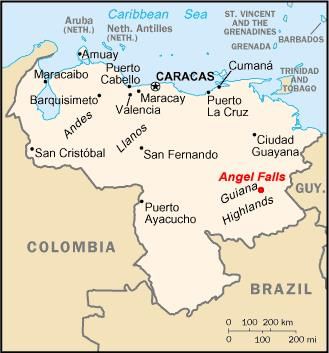
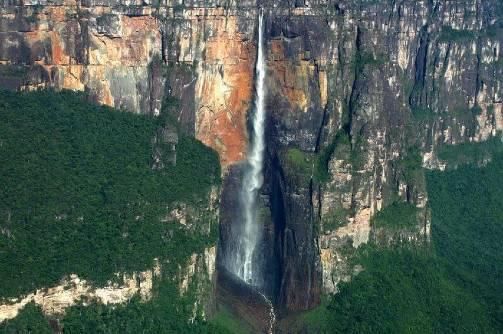
Parana river system –
- From source to its junction with Paraguay – known as Alto Parana
- Numerous waterfalls in alto Parana – then navigable
- Useful for HEP, irrigation
- Wheat cultivation in Pampas region
Uruguay river system –
- Joins Parana river – to form Rio de la Plata estuary
- Important for irrigation and HEP
- Not useful for navigation due to numerous rapids
The Sao Fancisco Basin
- The fourth-largest river system of South America is the river Sao Francisco which is about 2,914 km in length. It flows within Brazil.
- It originates North-west of the city of Belo Horizonte.
Rivers Of South America
- Amazon River
- Orinoco River
- Magdalene River
- Parana-Rio de la Plata
- Tocantins-Araguaia
- Sao Francisco River
- Paraguay and Uruguay Rivers.
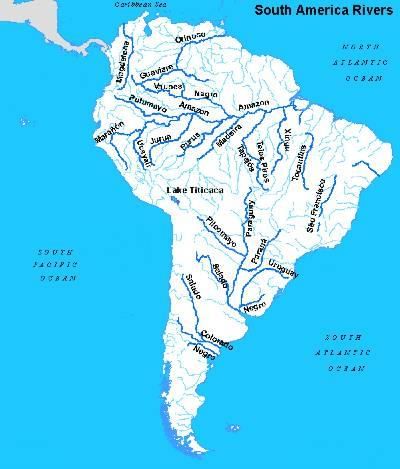
Important Lakes And Islands
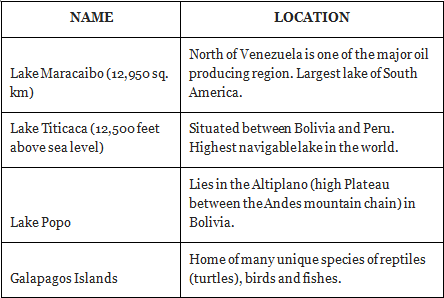
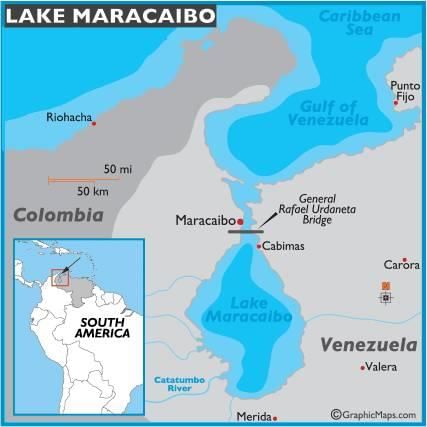
 Galapagos Islands
Galapagos Islands
Pantanal Wetlands
- It is the world’s largest tropical wetlands.
- It sprawls across three South American countries i.e. Bolivia, Brazil, and Paraguay, and supports millions of people there, as well as communities in the lower Rio de la Plata Basin.
- The Pantanal derives its name from the Portuguese word for ‘swamp’.
- It has the largest concentration of crocodiles in the world.
- Jaguars, the largest feline in the Americas, hunt caiman in the Pantanal, which has one of the highest density of jaguars anywhere in the world.
- The Pantanal is also home to the biggest parrot on the planet, the hyacinth macaw.
- The areas that are protected include parts that fall under an agreement called Ramsar that requires national governments to conserve and wisely use wetlands and some that are UNESCO World Heritage Sites and Biosphere Reserves.
- The Pantanal is bounded by the Chiquitano dry forests to the west and northwest, by the Arid Chaco dry forests to the southwest, and the Humid Chaco to the south.
- Less than 5% of the Pantanal is protected, with parts that fall under an Ramsar agreement, and some that are UNESCO World Heritage Sites and Biosphere Reserves.
- Around 95% of the Pantanal is under private ownership, the majority of which is used for cattle grazing.
The document Geography of South America- 2 | Famous Books for UPSC Exam (Summary & Tests) is a part of the UPSC Course Famous Books for UPSC Exam (Summary & Tests).
All you need of UPSC at this link: UPSC
|
745 videos|1444 docs|633 tests
|
FAQs on Geography of South America- 2 - Famous Books for UPSC Exam (Summary & Tests)
| 1. What countries are part of South America? |  |
Ans. South America is made up of 12 countries. These countries are Argentina, Bolivia, Brazil, Chile, Colombia, Ecuador, Guyana, Paraguay, Peru, Suriname, Uruguay, and Venezuela.
| 2. What is the largest country in South America? |  |
Ans. The largest country in South America is Brazil. It covers a vast area of about 8.5 million square kilometers, making it the fifth-largest country in the world.
| 3. What are some major geographical features of South America? |  |
Ans. South America is known for its diverse geographical features. Some of the major ones include the Amazon rainforest, the Andes Mountains, the Atacama Desert, the Pantanal wetlands, the Patagonian steppe, and the Guiana Highlands.
| 4. What is the climate like in South America? |  |
Ans. South America experiences a wide range of climates due to its vast size and geographical diversity. The northern parts are generally tropical and humid, while the southern regions have a more temperate climate. The Andes Mountains also create distinct climatic zones, with highland areas being cooler and drier.
| 5. What are some famous landmarks in South America? |  |
Ans. South America is home to many iconic landmarks. Some of the most famous ones include Machu Picchu in Peru, Christ the Redeemer statue in Brazil, Iguazu Falls on the border of Argentina and Brazil, the Galapagos Islands in Ecuador, and the Torres del Paine National Park in Chile.
Related Searches





















